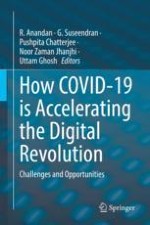2022 | OriginalPaper | Chapter
11. Effects of Economic Liberalization on Poverty and Inequality in India – A Case Study of Pre-COVID-19 Period
Authors : Rohit Narayan, Satyendra Narayan
Published in: How COVID-19 is Accelerating the Digital Revolution
Publisher: Springer International Publishing
Activate our intelligent search to find suitable subject content or patents.
Select sections of text to find matching patents with Artificial Intelligence. powered by
Select sections of text to find additional relevant content using AI-assisted search. powered by
